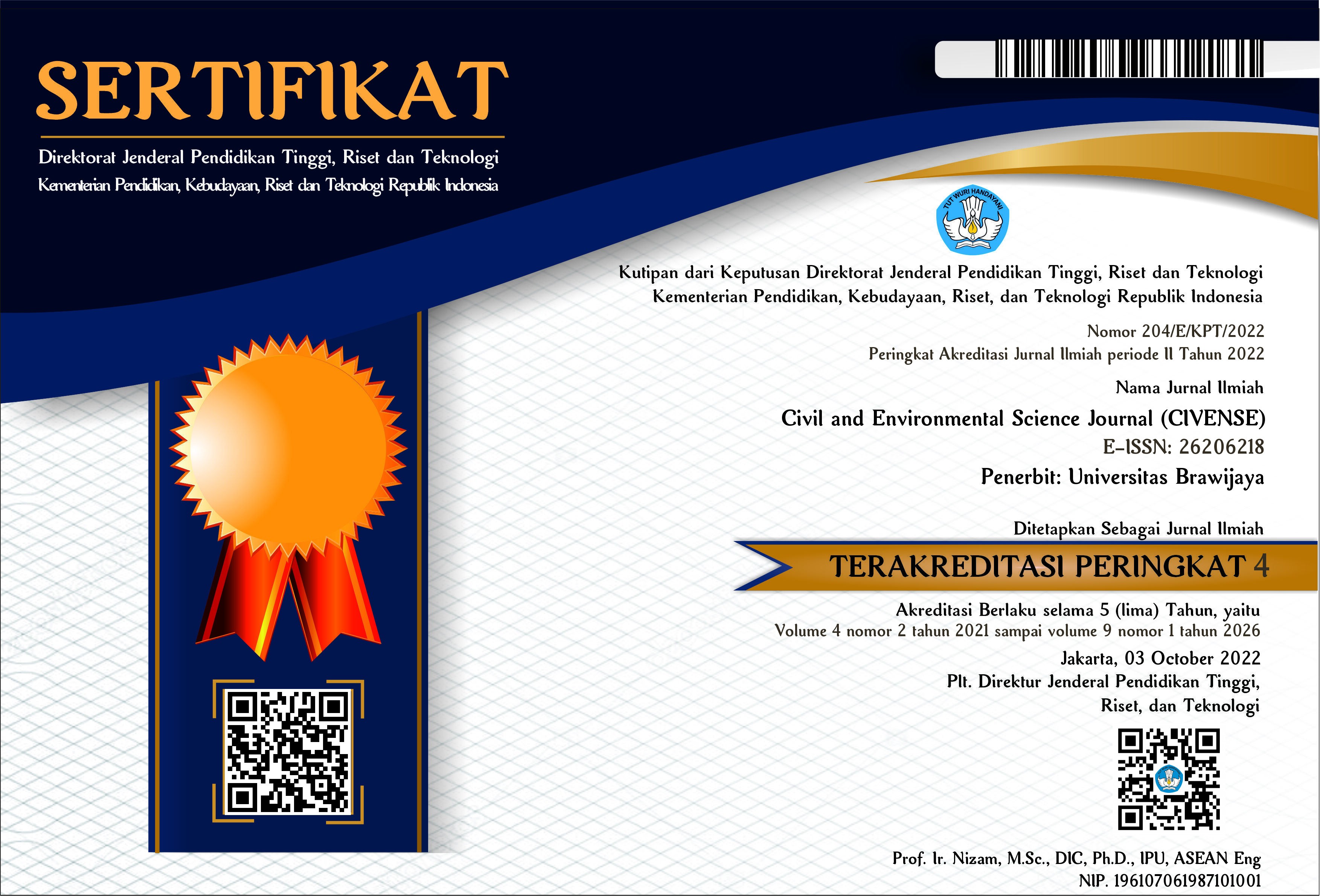Data Generation In Order To Replace Lost Flow Data Using Bootstrap Method And Regression Analysis
DOI:
https://doi.org/10.21776/ub.civense.2018.00101.4Keywords:
data generation, flow data, Bootstrap method, regression analysisAbstract
This paper aims to find method to generate data in order to replace lost flow data in the series of discharge data in Sungai Seputih River, Lampung Province. Bootstrap simulation is used to estimate the discharge data and complete the existing discharge data. Regression analysis is also used to find the pattern of data distribution. Results of the research show that both methods are able to generate new series of flow data that the distribution is similar to available field data. Results also show that the use of statistical methods is one way to tackle the problem of data limitations due to missing or unrecorded data. The weakness of data generation using a combination of Bootstrap methods and regression analysis is the disappearance of extreme values in the data series. Existing extreme values have been modified to ideal values that satisfy certain distributions. However, careful analysis is required in using statistical method, so that the results of analysis do not deviate from the field conditions.References
Huang, H. 2018. Monte Carlo simulation using Excell (In Bahasa Indonesia), Globalstats Academic Publication. http://www.globalstatistik.com/simulasi-monte-carlo-dengan-excel/. March 19th (19:05).
Březková, L., Starý, S., and Doležal, P. The Real-time Stochastic Flow Forecast. Soil & Water Res., 5(2): 49–57.
Flores, G. 2015. A stochastic model for sewer base flows using Monte Carlo simulation. Master Thesis, Stellenbosch University, South Africa.
Sungkono, J. 2015. Bootstrap re-sampling observation on estimation parameter regression using software R (In Bahasa Indonesia). Magistra No. 92 Year XXVII.
Efron, B. and Tibshirani, R. J. 1993, An introduction to the Bootstrap, Chapman and Hall, New York.
Monalisa, A. 2016. Use of Bootstrap resampling method for simulation data time series model using ARIMA, Undergraduate thesis (In Bahasa Indonesia), University of Jember.
Slaets, J. I. F., Piepho, H., Schmitter, P., Hilger, T. and Cadisch, G. 2017. Quantifying uncertainty on sediment loads using Bootstrap confidence intervals. Hydrol. Earth Syst. Sci., 21: 571–588.
Lenderink, G., Buishand, A. and Deursen, W. 2007. Estimates of future discharge of the river Rhine using two scenario methodologies: direct versus delta approach. Hydrol. Earth Syst. Sci., 11(3): 1145–1159.
Zhang, A., Shi, H., Li, T. and Fu, X. 2018. Analysis of the influence of rainfall spatial uncertainty on hydrological simulations using the Bootstrap method. Atmosphere 9(71): 2–24.
Weibull, W. 1951. A statistical distribution function of wide applicability, J. Appl. Mech.-Trans. ASME, 18(3): 293–297.
Downloads
Published
How to Cite
Issue
Section
License
Copyright (c) 2018 Civil and Environmental Science Journal

This work is licensed under a Creative Commons Attribution-NonCommercial 4.0 International License.
Authors who publish with this journal agree to the following terms:
Authors retain copyright and grant the journal right of first publication with the work simultaneously licensed under a Attribution-NonCommercial 4.0 International License that allows others to share the work with an acknowledgement of the work's authorship and initial publication in this journal.
Authors are able to enter into separate, additional contractual arrangements for the non-exclusive distribution of the journal's published version of the work (e.g., post it to an institutional repository or publish it in a book), with an acknowledgement of its initial publication in this journal.
Authors are permitted and encouraged to post their work online (e.g., in institutional repositories or on their website) prior to and during the submission process, as it can lead to productive exchanges, as well as earlier and greater citation of published work (See the Effect of Open Access).














